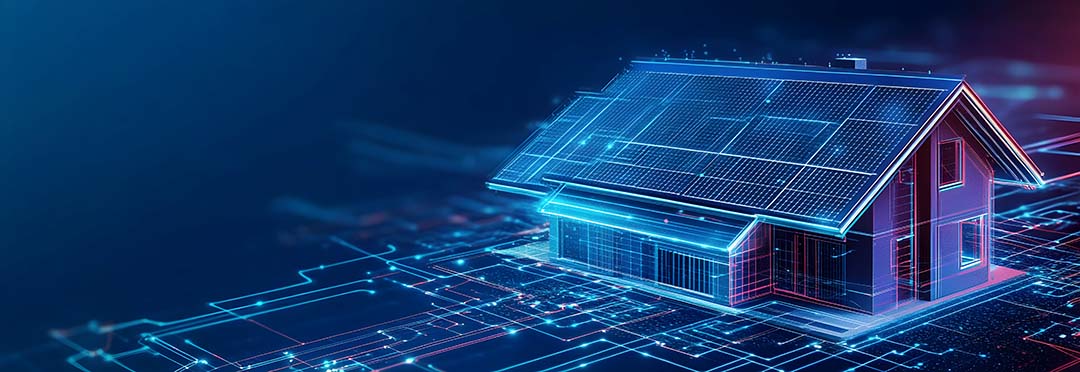Solar panels are the core component of a solar power system. They are responsible for converting sunlight into electricity, making them a crucial part of harnessing solar energy. This article will explore how solar panels work, the available types, and their role in the solar energy system.
How solar panels work
Photovoltaic cells in your solar panels are responsible for converting sunlight into electricity. These cells are made up of semiconductor materials, typically silicon, which absorbs the energy from the sun. When sunlight hits the cells, it causes the electrons in the semiconductor material to become excited, creating a flow of electricity. This flow of electricity is known as direct current (DC) electricity.
The DC electricity your home’s panels generate is sent to an inverter, which converts the electricity into alternating current (AC). This type of electricity is used to power homes and businesses. The AC electricity is then sent to the electrical panel, which can power appliances and lights in the home. Finally, any excess electricity generated by the solar panels is sent back to the grid, where others can use it.
Types of solar panels
The two main types of solar panels include; Monocrystalline and polycrystalline. Monocrystalline panels are the most efficient type of solar panel made of a single silicon crystal. However, they are also the most expensive. Polycrystalline solar panels are made of multiple silicon crystals. While this creates less efficiency, it also creates a less expensive option.
Role of solar panels in the overall solar energy system
Solar panels are an essential component in a solar energy system. They are responsible for converting sunlight into electricity, which is then used to power homes and businesses. The efficiency of the solar panels will determine how much electricity can be generated and, thus, how much energy can be produced by the solar energy system.
It is important to understand that the overall efficiency of a solar energy system also depends on other components, such as the inverter, the battery storage, and the design of the system. The inverter converts the DC electricity generated by the solar panels into AC electricity, the type of electricity used in homes and businesses. Battery storage stores excess electricity received during the daylight to use at night or during periods of low sunlight. Properly designing the system by considering factors such as the location, orientation, and shading of the solar panels is crucial to maximizing the system’s efficiency.
Solar panels also play a crucial role in promoting clean and renewable energy and reducing dependence on fossil fuels. By decreasing fossil fuels, solar panels can help reduce greenhouse gas emissions, promote energy independence, and create jobs in the clean energy sector.
Solar panels are the core component of a solar energy system. They are responsible for converting sunlight into electricity, and their efficiency will determine the amount of energy the system can produce. They are available in different types, such as monocrystalline, polycrystalline, and thin film. They are crucial in reducing dependence on fossil fuels, promoting clean and renewable energy use, and reducing greenhouse gas emissions. Working with a reputable solar company like Purelight Power is vital to ensure that the solar panels and overall system are designed and installed properly to maximize efficiency and savings.





